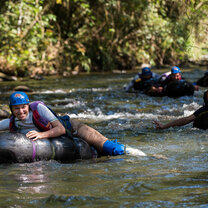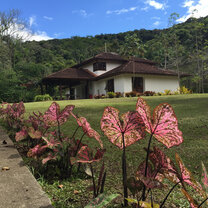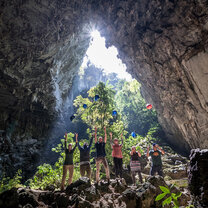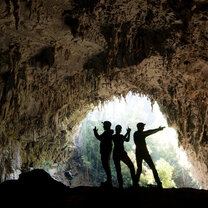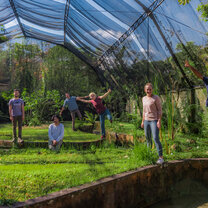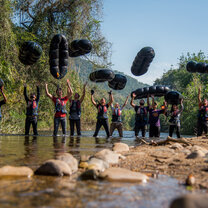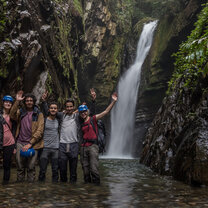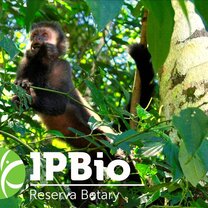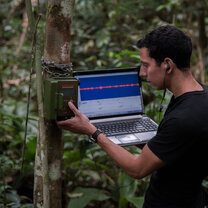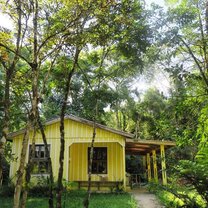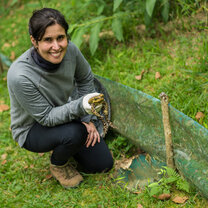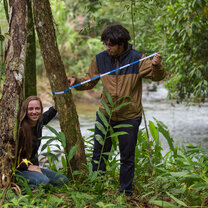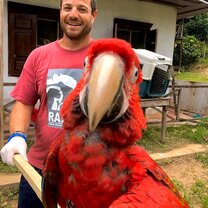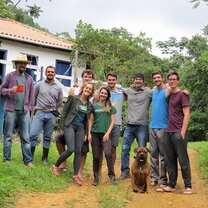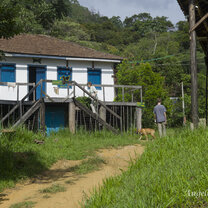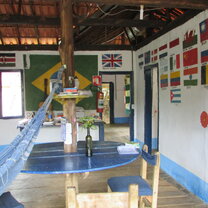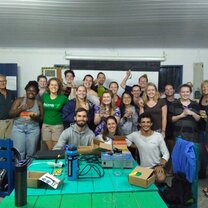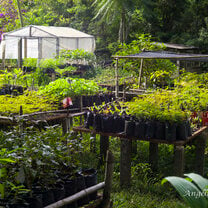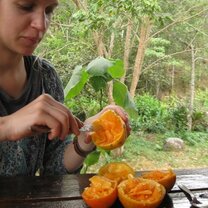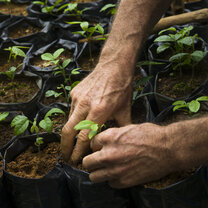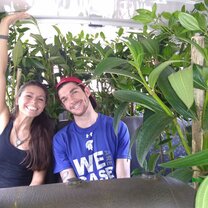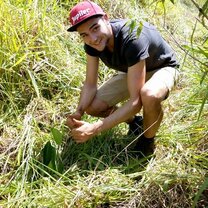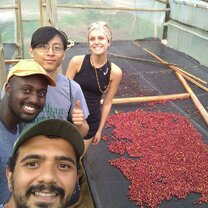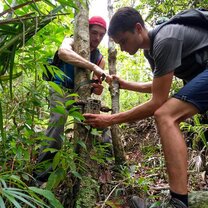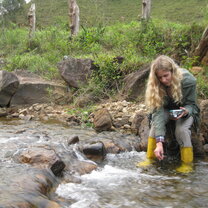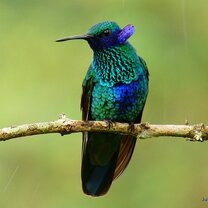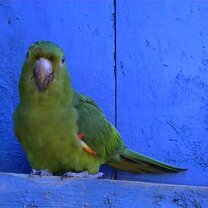Best Conservation Volunteer Opportunities in South America
Whether you’re interested in working with animals or helping to restore tropical rainforests, South America is packed with conservation volunteer opportunities. But with hundreds of options to choose from, finding the right one can be tricky. Explore our guide to conservation volunteer opportunities in South America.

With its biodiversity and wide range of ecosystems, South America is rich in opportunities for conservation volunteering. If you have a combined interest in working with animals or on environmental conservation projects, as well as a calling to the wild jungles and exotic fields south of the border, then you will be hard-pressed to find a better volunteer opportunity for you.
Not sure where to start? Let’s pick a location first.
Popular Countries for Conservation Volunteering in South America
South America is a diverse region with several species of plants and animals and many different types of ecosystems, including the Andes Mountains, tropical beaches, the Amazon jungle, vast deserts and plains, islands, and dense rainforests.

Argentina
Most of Argentina is vast, open space, and natural beauty abounds, from the northern deserts to the southern tip of Tierra del Fuego. Pristine Patagonia boasts majestic glaciers, spectacular mountains in the Andes range, waterways pure enough to drink from, and animals unique to the region, including guanacos and penguins. Conservation projects help keep Patagonia’s natural beauty intact and protect its native species.
Ecuador
Volunteering in conservation projects in Ecuador is an obvious choice given the country’s abundant and unique wildlife in the Galapagos Islands and its tropical rainforests on the mainland. Ecuador has a variety of natural landscapes, from tropical beaches and the Galapagos Islands to the Andes Mountains to cloud-kissed rainforests and the Amazon jungle. Volunteers can work in animal sanctuaries, teach environmental practices to others, work on organic farms, rehabilitate animals, and restore depleted forests.
Venezuela
With more than 100,000 species of animals, Venezuela is a top destination for conservation volunteering in the Andes Mountains or the Caribbean. Venezuela’s natural resources and wildlife are especially threatened by the country’s vast oil reserves and oil industry, as well as by deforestation and logging, making conservation projects vital to preserving its wildlife and habitats.
Brazil
Like other South American countries, Brazil is home to many animals, including anteaters, jaguars, birds, monkeys, and otters. The Amazon rainforest covers about half of the country, but deforestation, urbanization, and pollution have endangered the country’s wildlife and environment, leading animals to lose their natural habitats and clash with humans, such as hunting livestock that live on ranches.
Peru
Known for its ancient history, beaches, and Amazonian rainforest, the opportunities for conservation volunteering are endless in Peru. With the general population shifting from rural to urban areas, there’s been a strain on the agricultural industry, and a need for regenerative agriculture and sustainability projects to help conserve the natural beauty of Peru.
Top Rated Conservation Volunteer Programs in South America
Largely affected by deforestation and, in some areas, drilling for oil, South America is in great need of conservation volunteers to help preserve and protect its environment from further destruction, and to care for animals whose habitats have been lost to deforestation.
Here’s some of our picks for volunteer conservation programs, based on specific areas of focus, reviews, and overall rating.
Best for biodiversity research and conservation: IPBio - Biodiversity Research Institute
If researching a dazzling field of bioluminescent mushrooms or helping to maintain trails and microclimate greenhouses sparks your interest, then the biodiversity research program with IPBio may be perfect for you.
Today, only 7% of the Atlantic Forest’s original biome remains, making conservation critical. Volunteers with the IPBio - Biodiversity Research Institute perform hands-on field research in one of the world’s largest biodiversity hotspots to help promote conservation and the sustainable use of Brazil’s natural resources.
Check out these reviews from 2 fellow volunteers:
“The people working there truly have a passion for nature, conservation, and community. From glowing mushrooms, to monkeys, fish, frogs, and rehabilitating birds and coatis, IPBio has something for everyone in the realm of conservation.” -- Ben
“Volunteering at IPBio is the once-in-a-lifetime experience you’ll want to repeat again and again! Being surrounded by the immeasurable beauty of the Atlantic Forest while you assist the on-staff biologists is one of the best things you could do with your time. At IPBio, there are so many small ways to make a big impact on the local environment.” -- Covi
Program Details
Best for working with animals: RAREC
Do you consider yourself an animal lover? Is it your dream to help rescue and rehabilitate animals in the rainforest? Then check out the Wildlife Caretaker Amazon program with RAREC. Designed for volunteers with a deep love and patience for taking care of animals, this program allows you the opportunity to care for animals right in their natural habitat.
From feeding manatees and observing playful monkeys, to even training baby otters, you’ll work alongside caretaking experts to monitor the physical and emotional health of animals and expand your knowledge of wildlife.
Read about these 2 past participants' experiences:
“I stayed at RAREC for 2 months and I had the time of my life. The staff teaches you how human beings and wild animals can interact wonderfully together and make you understand their personalities and quirks.” -- Debora
“It was my first time volunteering and I enjoyed it a lot. The staff had so much knowledge on every single animal... There were so many activities like preparing the food, caring for the animals, cleaning the cages, monitoring behavior and so on.” -- Julia
Program Details
Best for agroforestry and regenerative agriculture: Iracambi Rainforest Research Center
South America is largely affected by deforestation, making sustainable agriculture practices more important than ever. If you’re looking to make a difference, the Rainforest Restoration & Sustainability program with The Iracambi Rainforest Research Center is a great option.
The Iracambi Rainforest Research Center is dedicated to saving forests and has even planted over 130,000 native forest trees in the past 20 years. As a volunteer, you’ll have the opportunity to work in the forest nursery, plant trees in local farms, help maintain forest trails, learn how to produce chemical-free foods, and even harvest coffee.
Past volunteers gained valuable, hands-on knowledge about agroforests and sustainable farming practices. Here’s some of their experiences:
“From visiting local coffee plantations to learning about agroforests and sustainable farming, I was given ample opportunities to learn and challenge myself intellectually. My time at Iracambi provided me with an invaluable, intellectually challenging, and meaningful experience that I will treasure for the rest of my life.” -- Matthew
“If you are reading this and are soon to embark on a volunteer mission at Iracambi, congratulations, you have made a fabulous life decision. I particularly enjoyed helping in the nursery with planting, identifying seedlings, weeding, watering... A newfound or heightened respect will be garnered for farmers and laborers out there worldwide.” -- Karol & Lily
Program Details
Next Steps Before Volunteering in South America
Before you start saving your money and packing your bags to head south, it's important to take time to research everything you need to know. Keep in mind these few action items.
Stay up-to-date on COVID-19 Restrictions in South America
With travel ramping up again, volunteer programs are slowly starting to roll out their applications for 2021/2022. However, not every country has officially reopened their gates to allow travelers in.
As of July 2021, South American countries such as Chile, Uruguay, and Argentina still remain closed for U.S. travelers.
Countries such as Ecuador, Brazil, and Peru are open with mandatory entry requirements such as proof of vaccination or a negative COVID test taken within three days prior to arrival. However, travel is still not advised due to COVID-19, and quarantine and curfew rules may be in place for travelers.
We recommend taking proper precautions and staying updated on each country’s travel advisories before booking or planning any trips to South America, as rules and restrictions change often.
Still want to lend a helping hand? Having a global impact doesn’t always mean hopping on a plane and physically being on the volunteer site. If you’re interested in volunteering without leaving the comfort (and safety!) of your home, explore virtual volunteer opportunities.
Try Learning Spanish or Portuguese
While many programs don’t require knowledge of Spanish or Portuguese (if you’re heading to Brazil, for example), it can be helpful to have at least a basic command of the language before you go. For relaxed, at-home learning, try Duolingo, a mobile app that you can download on your phone for practice. If you want to advance your language skills to feel more comfortable, try taking a class at a local college or community center or investing in an extensive language-learning program, such as Rosetta Stone.
If you decide that an immersion program would be most beneficial, you can arrive in South America early and take language courses at your destination. Here's a great database of Spanish language programs that may come in handy for you.
Further, some volunteer programs also include time for language instruction. We definitely encourage taking advantage of any opportunities to better learn a foreign language during your volunteer stint.
Be prepared for visas and entry fees
South American countries generally don’t have visa requirements for U.S. citizens, but some require visitors to pay a reciprocity fee before entering the country.
- Ecuador: No visa required for U.S. citizens
- Brazil: Visa required for U.S. citizens; travelers must obtain this in advance
- Argentina: No visa required for U.S. citizens
- Venezuela: No visa required for U.S. citizens
- Peru: No Visa required for U.S. citizens
For more information about visas, medical advisories, and entry requirements, visit the U.S. State Department’s travel website. Vaccinations may be required for travel to South America, especially if you are visiting remote areas where diseases such as yellow fever may be present.
You can also explore some of our resources for planning and preparing for a volunteer trip abroad.

Ready to Volunteer in South America?
Let’s be clear, volunteering is not the easiest way to travel the world.
But finding a reputable volunteer organization, a cause you’re passionate about, and going abroad with an open mind and happy heart, will make a huge impact in the long run. Protecting habitats, partaking in reforestation projects, and practicing sustainable agriculture will lead to safer places for animals and ultimately allow for endangered populations to increase.
Whether you’re on a farm, on the beach, or in the Amazon rainforest, you’re bound to have the experience of a lifetime volunteering in South America.


